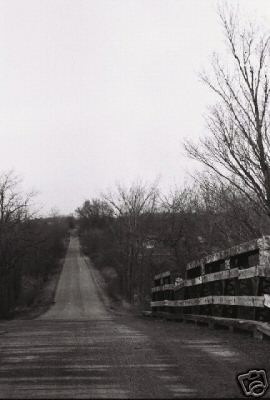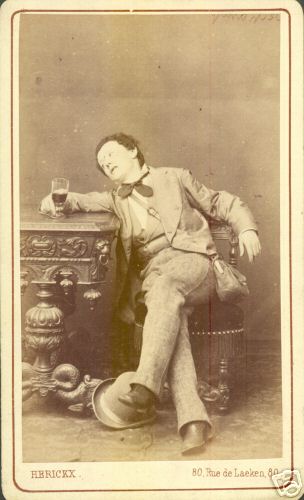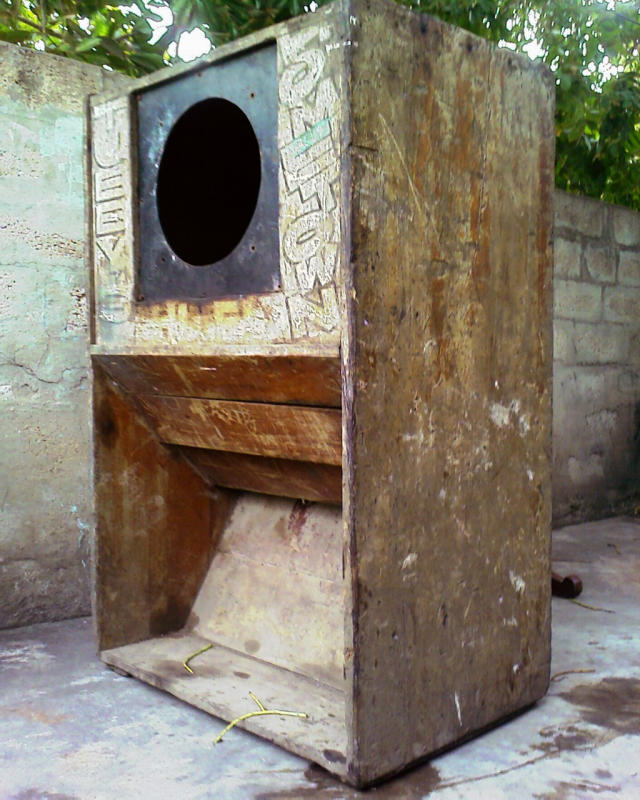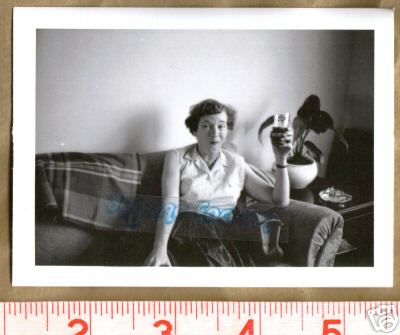Schwarz
View current page
...more recent posts
Starting today, the Museum of the Moving Image presents a weeklong series titled “The Real Edie Sedgwick” that further burnishes her legend and her importance as a muse. The major Warhol-Sedgwick collaborations are all here, including those in which she is the star attraction, like “Poor Little Rich Girl,” and those in which she appears as one guest among many, like “Vinyl.” Also on view are Warhol’s western parody, “Horse”; a fragment from Richard Leacock’s “Lulu,” made for the Alban Berg opera; Andrew Meyer’s “Match Girl” (narrated by Warhol); and Edie’s excised footage from “The Chelsea Girls.” Less happily, there is John Palmer and David Weisman’s “Ciao! Manhattan,” a portrait of her in terrible free fall.
quattroporte
NEW ORLEANS — Googe's popular map portal has replaced post-Hurricane Katrina satellite imagery with pictures taken before the storm, leaving locals feeling like they're in a time loop and even fueling suspicions of a conspiracy.
Making The Modern
MANUFACTURED LANDSCAPES
going up
Three decades after his Pompidou Center in Paris turned the architecture world upside down and brought him global fame, the British architect Richard Rogers has been named the 2007 winner of the Pritzker Prize, the profession’s highest honor.
little red book (love)
A neon sign that has drip, drip, dripped its message—"The Leak Stops Here"—on Los Angeles' Westwood Boulevard for 60 years is coming down next month.
The animated Clayton Plumbers sign is too expensive to maintain, says its owner, Jim Bacon, who bought the building in 1979 and paid $20,000 to restore the 1947 sign six years ago.
"It got too costly to maintain. It was over $1,000 a month," Bacon says. "I finally said, 'No, I'm not going to do it anymore, that's it. I'm taking it down.'"
A crew will remove the sign, which is about 20 feet tall, on April 16, Bacon says.
happy birthday eric (not-god) clapton hour long special archived here :
sounds of blue
The architect Renzo Piano has withdrawn from a project to build an 80-story tower in Boston that would have involved the demolition of a 1960 building by Paul Rudolph that is valued by preservationists, a spokeswoman for Mr. Piano said yesterday. The spokeswoman declined to give a reason for the architect’s decision, but Mr. Piano said earlier this month that he was resisting pressure from the project’s developer, Steven Belkin, to increase the width of the building. Mr. Piano also said at the time that if his project were to proceed, the 13-story Rudolph structure, also known as the Blue Cross/Blue Shield building, would have to be removed to make room for a plaza. Preservationists are battling to save the Rudolph building, whose somewhat ornate exterior ran counter to the then-prevailing Modernist preference for unornamented exterior glass walls. The Boston Landmarks Commission imposed a 90-day delay in the demolition of the Rudolph building on March 13, but Mr. Belkin said that the Boston firm CBT Architects intended to “implement Piano’s design, making appropriate refinements as needed during the design review process.”
Speed / barrett-jackson / Palm Beach
Thu, Mar 29 9:00PM
Fri, Mar 30 6:00PM
Sat, Mar 31 12:00PM

If Rudolph’s buildings aren’t as highly valued as those of some of his contemporaries, that’s in part because they aren’t as well understood. But it isn’t difficult to become familiar with Rudolph’s prodigious output. In a Rudolph-themed road trip last month, with New York as a base, I was able to see nearly a dozen of his buildings in three days.

This Saturday night, you could win a classic mid-century modern Herman Miller chair and at the same time help raise funds to save from demolition a classic mid-century modern beach house by Long Island architect Andrew Michael Geller.my previous postings on the pearlroth house. thanks to google news alert i received this short notice cry for help. i cant believe the pearlroth estate (always with the threat of immediately pending demolition!), please read on, its a horror story. save the
Design Within Reach Studio at 30 Park Place in East Hampton will host a silent auction and raffles from 7 to 9 p.m. to raise the money needed to move the acclaimed Pearlroth House from 615 Dune Rd. in Westhampton Beach to public land five miles farther east on Triton Beach. Built in 1959, its double-diamond shape has been compared to a box kite and a square brassiere, and is widely acclaimed by architects, critics and historians as an influential example of the Hamptons' innovative and witty - and fast disappearing - post-World War II beach house architecture.
The heirs to the Pearlroth House will demolish it unless it can be moved before the spring building season. Current regulations would make it impossible to renovate it as a dwelling without substantially changing it, and its owner offered to donate the 600-square-foot house to the architect's grandson, filmmaker and historian Jake Gorst. He and fellow preservationists say they'll need about $200,000 to relocate and restore the structure, which they hope will house a museum of mid-century architecture at its new site.
For more information about the Saturday fundraiser, which will feature a slide presentation, wine and cheese, as well as the silent auction - and to learn how to make a donation - call Gorst at 631-651-9939.
Are the curvaceous glass forms of the IAC headquarters building, evoking the crisp pleats of a skirt, a bold departure from Manhattan’s hard-edged corporate towers? Or are they proof that Mr. Gehry’s radical days are behind him?
photo group
brownstoner (if for no other reason than the negative comments)
mies van der rohe’s tugendhat house brno, czech republic
From the outside, the Tugendhat House doesn’t look like one of the most important residential buildings of the 20th century: it’s just two white stucco cubes separated by an opening through which a few spiky treetops protrude. But as a tour guide led a group of 10 through this modern home in the Czech Republic’s second-largest city in early March, it was clear that there was much more to the house, the bulk of which is built on the steep hillside that drops away from the street.
WFRT
via vz
Urban density makes sustainable cities possible. The more closely together we live, the more we share amenities, and the less space we take up for our personal needs, the smaller our collective footprints become. But getting more compact means changing the commonly accepted correlation between McMansions and good living.
The Japanese lead the way in proving the benefits of small spaces. By virtue of long-held tradition and the necessity of finding comfort in populous cities like Tokyo, designing homes for tiny in-between spaces has become a modern art.
heres my ny story from earlier today:
doing pickup truck moving job for friend tom w. and unknowingly droped cell phone in street making 1st pickup on w 39th street. heading over 59th street bridge tom g gets call from person who found the phone. they went into the memory and redialed the last made call (me to tom coordinating 1st pickup). he said were in queens and would be back in the city in 1 1/2 hours and that wed call him back then. caller said he worked at broadway and 38th street. i gave tom 20 bucks when we got to the address and he jumped out and took the elevator to the 21st floor. the caller was a male asian receptionist in the garment industry. he was happy to get the $ and i was happy when tom came back with my phone. wooo-dy wooo-hoo
Carbonnier's Inuksuk Residence
This is not the first book to describe this period of radical musical change and social "revolution". Several books have been written by some of the protagonists of the London hippy scene of the mid/late 60's - e.g. Richard Neville (him again) now wealthy back in Oz, Mick Farren describing The Social Deviants (and Pink Fairies) and International Times, 'Lost In the Woods' a biography of Syd Barrett and the rise of Pink Floyd, 'Out-Bloody-Rageous' the Soft Machine biography. Now here Anglo-American record producer Joe Boyd has come up with a most readable gem of an autobiography, concentrating largely on the period 1964 to 1971. The book's title 'White Bicycles', refers to the white bicycles frequently seen then in the Netherlands, (which were for anybody to use - echoing the intended freedom to share 'each other's goods, plough each other's earth', and the related hippy ethos), and of course the hit by one of the first bands he managed, Tomorrow.boyd with terry gross on fresh air / another book review
Boyd relates how he fell into the music business, discovering a long forgotten blues singer was happy to do a gig at a Harvard Uni student hall for 25 dollars as long as he got a ride to the show. Boyd had a whip round taking a dollar each from everybody who attended, and so was able to give the musician a 75 dollars bonus. Then the summer jobs working for record labels. Or acting as goffer at the Newport Jazz & Folk Festival in 1965, when he claims rock came about i.e. when Dylan brought his electric folk band on stage with Mike Bloomfield and Al Kooper in that line-up, so shocking the folk purists such as Pete Seeger, that they walked out of the Festival. Then road managing ancient blues singers around Europe. The love affair with the UK, after Boyd talked himself into a scouting job for talent for Elektra Records, for example claiming how close he was to grabbing Floyd for the label. Discovering Sandy Denny and Fairport Convention, and then getting Denny into the band. Being stunned by Nick Drake's demos and then being more stunned that nobody bought Nick Drake's records when first released - although when John Cale asked Boyd who was new, on hearing a work-in-progress tapes for '5 Leaves Left', Cale went straight round to Drake's digs, sorted out a couple of tunes, then they recorded these together the following Monday. The rise and fall of the Incredible String Band.
sellersville theater, sellersville buks co pa
upcoming : Alejandro Escovedo, Leon Russell , Dick Dale, Gram Parker.
A little over a year ago I did this post about this blog I had come across by a guy named Hanszun that I was surprised to see was giving away lots of complete, in-print CDs (including box sets), instead of the ultra-rare out-of-print stuff usually made available by most "sharity" sites. I said that "Blogs like this Hanszunblog (not to pick on him- I'm sure there are hundreds more) are going to be the death of music blogs and are going to bring the wrath of the RIAA down on ALL of us". This led to a bit of a flame-war in my comments which I finally shut down when some guy threatened to contact Arthur Lee who he had "had some correspondence with a bit in the past, and have his email address" to report me for posting some Love videos because I had "pushed a good friend of mine just a little too far."
look, i like getting lectured in between cuts by experts in their musical fields. thats why last night (not his regular time slot) i listened to phil schaap yang on in a single show history of jazz. one show but there was still time for an exhaustive discussion on king oliver, louis armstrong and new orleans. my terrestrial reception wasnt cutting it so i checked and wkcr columbia univ does have a website with online streaming. with further exploration i found phil schaaps selected archives with in depth focuses on louis armstrong, bix beiderbecke and ornette coleman. im going to guess and say the mlk show is a in depth general history of jazz. schaap is very very knowledgeable on his subject and the shows come off as scholarly lectures. even repetitive playing of the same song pointing out the different solos and band members proformances, dates, location, etc.
i put a "john cage" search into radio365 and i got radiomolecule which boasts the following descriptive information :
Acoustic explorations.
The Best in Classical-Modern, Avant Garde and Experimental.
20th Century Serial and Atonal music; Musique Concrete; Cage's Chance Music; Minimalism; Field Recordings; Olivero's Deep Listening soundscapes from underground caves; Sound Art in general or just about anything 'audible' that might be good.
Works by George Antheil, Henry Cowell, Elliott Carter, Sofia Gubaidulina, John Cage, Terry Riley, John Adams, Olivier Messiaen, Morton Subotnick and more.
New Music from the 20th and 21rst Centuries.
will the commercial interruptions be too frequent and will the programing be too repetitive? very good programing and cd quality stream could justify a vip subscription.

It's been more than twenty-five years since Tom Wolfe became America's most widely read architecture critic with his 1981 best-seller, From Bauhaus to Our House, perhaps the most ill-informed book ever written about architecture. Time has dimmed neither its splenetic malice nor joyful ignorance, but what about the 75-year-old Wolfe himself? To find out, I went up to Columbia University recently to hear him participate in a symposium on New York City architecture.the november '06 nyt opinion piece
To get along in life, everybody needs pretty much the same thing — but not exactly the same thing.
That's the problem given historical shape by "Modernism: Designing a New World, 1914-1939," the vast, thought-provoking show opening Saturday at the Corcoran. It touches on virtually every art form, from drawing and painting to cinema and dance. But because the show originated at the Victoria and Albert Museum, one of the world's great repositories of design and decorative arts, the more populist media — architecture, design, graphic art — resonate loudest.

via the fmu blog
...............................

e-cube house via justin
if you are familar with the maysle brothers documentary Salesman, then you may remember the location ali-baba avenue in opa-laca florida. its just a little north and west of miami. i know it personally because i worked for my uncle who had a fishing tackle manufacturing company there summer '73.
opa-laka is in the nyt today, they're boarding-up city hall :
Where the scrub palmetto once grew wild, Opa-locka has languished as a violent, drug-addled void on a cartoon stage set, one fantasyland too many in an oversubscribed state. Beneath a film of dust, a suggestion box at City Hall holds a single blue slip that says, “The best suggestion would be more police.”via vz
For rehabilitation, the city has turned time and again to promoting the legacy of its architecture, a peculiar homage to Moorish antiquity that includes 20 buildings on the National Register of Historic Places. Down streets called Sesame, Aladdin and Caliph, archways and turrets are adorned with brilliant mosaics and muted flowers in bas-relief.
But now even the fantasy’s veneer is crumbling. Pronouncing City Hall’s roof unsound, the walls moldy and the rats intolerable, the City Commission voted last month to move to rental space in a new four-story office building most vividly described as rectangular.
Many years ago Meyer Schapiro argued that there was a radical difference between art’s spiritual value and its commercial value. He warned against the nihilistic effect of collapsing their difference. I will argue that today, in the public mind, and perhaps in the unconscious of many artists, there is no difference. The commercial value of art has usurped its spiritual value [i would say use value], indeed, seems to determine it. Art’s esthetic, cognitive, emotional and moral value -- its value for the dialectical varieties of critical consciousness -- has been subsumed by the value of money.
Art has never been independent of money, but now it has become a dependency of money. Consciousness of money is all-pervasive. It informs art -- virtually everything in capitalist society -- the way Absolute Spirit once did, as Hegel thought. Money has always invested in art, as though admiring, even worshipping, what it respected as its superior -- the true treasure of civilization -- but today money’s hyper-investment in art, implicitly an attempt to overwhelm it, to force it to surrender its supposedly higher values [thus neutralizing all art and artists functioning in service to the system], strongly suggests that money regards itself as superior to art.
ohio or pennsylvania house construction photo series
the enbankment jc style
floyd in kearny
bronzing the radiator
the rockefeller apartments - the jewel of 55th street
caulking ny - its a tschumi thing
from the advertecture desk :
Looks like Apple is continuing to build awareness for the Apple iPhone. On Monday March 12th, workers at the 5th Avenue Apple Store in New York City posted a large iPhone ad on one full side of the glass structure.via curbed
ok oilfield
One day in the winter of 2003, John Hon opened an e-mail to Single Speed Design the architecture firm he runs with his wife Jinhee Park, in Cambridge, Massachusetts. It was from a structural engineer named Paul Pedini, who said that he had seen a Single Speed project and liked it so much that he wanted to hire the firm for an unusual project. He explained that he worked at a contracting company that had spent decades on the Big Dig, the huge project to replace Boston’s elevated Centra Artery with a tunnel, and that he had come up with the idea of using steel and concrete salvaged from the project to put up a building. “It would be sort of like Junkyard Wars meets Habitat for Humanity,” he wrote.
Hong wondered how to respond. “You get a lot of weird e-mails if you put your sign in front of a construction site,” he said. But he and Park went to meet Pedini in a junk yard a few miles north of Boston where the company was storing highway sections. “When I saw all this stuff, I realized he was serious,” Hong said.
clark kent supply co
fake cigarette burn
baudrillard and form :
Consider the shades of Lacan in the discussion of the real. One of the three registers (along with the imaginary and the symbolic), the real is barred from entry into the ego at the mirror stage, the moment of identification that is constituted on an image, that constitutes the imaginary basis of objectivity - we (as "I") are constituted by our (as "my") images in another. The subject takes an image for self, and the "I" condenses into a form, a fictional wholeness the ego never attains. The illusion of form is the specular "I" that the subject may never match - note that this is prior to the subject's linguistic entry into the world, prior to the association of the subject with the language that will become the horizon of its possibilities.
Baudrillard is making a point about the power of simulation vs. representation - "the latter," writes Baudrillard, "starts from the principle that the sign and the real are equivalent" (11). So the specular "I" molds itself by power of such an assumption. The entry into language transfers the power of the specular "I" into language - the sign becomes the more scientifically accessible relationship between signifier and signified, assuming the force of the real. But we know that the image cannot represent the full force of the real - if the real is irreducible, how is it reduced to an image? And if it can't be represented, how do we come to know it? The viewer seeks to be united with the view, but there is always that barrier to true integration with the real. So some of the power of origin is granted to the sign, in order to make the origin's power known to us. Baudrillard then continues:
Conversely, simulation starts from the utopia of this principle of equivalence, from the radical negation of the sign as value, from the sign as reversion and death sentence of every reference. Whereas representation tries to absorb simulation by interpreting it as false representation, simulation envelops the whole edifice of representation as itself a simulacrum." (11)
From Kenneth Frampton's Studies In Tectonic Culture, on Meis, building and form :
As he put it in an interview with Christian Norberg-Schultz in 1958 "We do not like the word 'Design.' It means everything and nothing. Many believe they can do everything from design a comb to planning a railway station - the result is nothing is good. We are only interested in building. We would rather that architects use the word 'building' and the best results would belong to the 'art of building.' "
[...]
We refuse to recognise the problems of form, but only problems of building.
Form is not the aim of our work, but only the result.
Form by itself, does not exist. Form as an aim is formalism; and that we reject.
Essentially our task is to free the practice of building from the control of the aesthetic speculators and restore it to what it should be: building.
desperately bad news for internet radio
As you can imagine, designing $400 huts for a Caribbean island doesn't pay much. So why make even less by giving your ideas away? Aside from the good karma, it might just get you a slew of streamlining tools -- and more work, even some that pays.
Nonprofit Architecture for Humanity is convincing the building industry to share -- be it blueprints, engineering specs or construction tips -- through its latest project, the Open Architecture Network.
The open source site, which goes into beta today, is a one-stop spot for anyone involved with innovative and sustainable buildings (think: architects, engineers, community leaders, nonprofit groups, government agencies and technology companies). Consider it the match.com for architects wanting to meet community leaders and nonprofits with open dance cards, when it comes to backers and builders for a project.
Loaded with projects and concepts, the site is built so people can upload info, comment on and, in some cases, download building or project specs. Housed on two servers totaling six terabytes, the site doesn't limit file size -- a major coup for architects who typically work on megabyte-heavy CAD files.
The Fab Tree Hab is an all-green concept home that will grow from "a few seedlings into a two-storey, water-recycling, energy-efficient abode," according to researchers, largely from the Massachusetts Institute of Technology. They expect it will take a minimum of five years for one of their homes to grow, depending on the surrounding climate.
here is what artnet (the leading online art world resource) has to say about the recent death of jean baudrillard. thats right, nothing.
*see artnet status updated in comments
A barrel-shaped restaurant that first opened in 1937 on Route 66 in Amarillo, Tex., may have reached the end of the road.
Beloved for its hamburgers and chicken-fried steak sandwiches, the Beef Burger Barrel closed on Feb. 3.
aversion to life - dallas tx
via vz

His [Henry Wessel] equanimity can be a detriment sometimes. Modesty has its costs, and his views of houses, straight-on like head shots or real estate advertisements, while conveying a curious, plainspoken affection for their home(l)y subjects, in the end don’t overcome their inherent boredom. Noir-ish night shots of darkened bungalows and moonlit trees come to look repetitive too.
Sometimes the point of an image is simply hard to fathom. I gazed at a picture of an empty yard, wondering whether the geometry of it was the subject, before finally giving up. Mr. Wessel doesn’t always make it easy. But then, looking hard isn’t.
With the reopening today, the city will have spent $3.2 million to redesign and rebuilt the Water Gardens, with most of the changes focused on the Active Pool.
The floor of the pool has been raised, bringing the maximum water level to about 1 1/2 feet. The water will drain through a trench along the perimeter of the pool, instead of through a single point in the center. And a newly installed wall with seating and a gate along the top of the stairs will add a protective barrier around the pool.
And the Water Gardens budget has doubled this year, to nearly $732,000. Staffing has been increased from two to seven workers, and the city plans to staff the park from 7 a.m. to 10 p.m. Workers will lock the gate when they leave at night.
Other changes are less obvious but no less important, officials said. Pumps, electrical switches and filtration equipment were replaced, and a control was added to automatically maintain water levels. The system will also include an emergency stop button and a system to notify operators of abnormal conditions.
"A lot of it, the public will never see," said Harold Pitchford, Fort Worth's acting assistant director of parks.
Randall Charbeneau, an associate dean in the engineering school at the University of Texas at Austin, reviewed the changes at the request of the Star-Telegram. He said the changes should reduce the velocity and depth of the water in the Active Pool.
Those changes, he said, "should greatly increase safety."
next photo series

the pulaski highway t-shirt is finally a reality
for this reason alone, pledge to the wfmu marathon
andy breckman - a man with only three jokes, yet possibly the funniest man on earth - blows the nyt metro diary's mind.
container like pods with more desirable living dimensions using container stacking technology - via the fabprefab container bay msg board - pdf warning!
comuting from fireisland to manhattan year round
WITH the wind riffling the marsh grasses, Russell Groves borrowed an aluminum ladder from the construction crew working next door and climbed up on the roof of the tiny white house to survey the icy bay beyond.
The house is for sale for only $299,000, a rare case in which someone in search of a modestly priced house on the South Fork of Long Island can buy a lot extending into the marshland without anything — or anybody — blocking the view.
it generates. it internets. it cools and refreshes.
This has something for everyone. For the prefab fans, it folds out of a shipping container. For the alt energy types, it has a thousand square feet of photovoltaics and can pump out 16 KW without the optional turbine. For the computer nerds, it has a communications control center with "full range of wireless VSAT, VOIP and wireless communications capable of handling thousands of phone calls and offering wireless connectivity for a range of up to 30 miles." When shipped for disaster relief, it uses the electricity to filter 30 gallons per minute of contaminated ground water to WHO standards for drinking.hat tip to justin. thanks!
The Gordon Matta-Clark retrospective at the Whitney Museum of American Art should be required viewing for any architect born in the age of the computer screen. Few artists could match his ability to extract raw beauty from the dark, decrepit corners of a crumbling city. Fewer still haunt the architectural imagination with such force.
A trained architect and the son of the Surrealist artist Roberto Matta, Matta-Clark occupied the uneasy territory between the two professions when architecture was searching for a way out of its late Modernist doldrums. His best-known works of the ’70s, including abandoned warehouses and empty suburban houses that he carved up with a power saw, offered potent commentary on both the decay of the American city and the growing sense that the American dream was evaporating. The fleeting and temporal nature of that work — many projects were demolished weeks after completion — only added to his cult status after an early death in 1978, from cancer, at 35.
joey and ronnie doing johnny thunder's you cant put your arms around a memory

Travelers Insurance Company - The Triumph of Man (mp3s)
we had this disc too. a souvenir of the fair
zoller featured artist on hunt and gather
hippie era school bus camper conversion. must sell $6,500.00
thanks steve
A California-based environmental advocacy group, Global Green, saw the devastation along the Gulf Coast as an opportunity to push for environmentally friendly construction in New Orleans and nationwide. With backing from an actor and recent New Orleans transplant, Brad Pitt, Global Green last summer held a green community design contest, which the GreeN.O. LA design won over 120 other submissions, earning a $50,000 prize.
The NYPD now treats graffiti more seriously than ever before. It operates an 80-member anti-graffiti task force, has anti-graffiti coordinators at each precinct, and operates a database that allows the cops to start tracking the writers by their tags before they even know their names. A zero-tolerance arrest policy now comes with more stringent prosecution.
The La Concha lobby is spending the winter in an outdoor gallery called the Neon Museum's "boneyard," a three-acre site where the museum stores neon signs it salvages from demolished motels.
In an engineering study funded by the National Trust, Melvyn Green and Associates determined that the building could be safely cut and moved and reassembled.
So the building's owner, the Doumani family, who commissioned Williams to build the motel, donated the lobby to the local Neon Museum and allowed the group time to gather state grants and donations for the project.
So far, the museum has raised $990,000, and the move cost $400,000. Workers had to cut the concrete structure into eight parts so it could be moved beneath a freeway overpass.
"The move was more costly than anticipated because, since this had never been done before (cutting a thin-shell poured concrete structure of this size), the contractor was very cautious and added extra shoring and bracing," Dorothy Wright, museum board member, said in an e-mail.
jimb sent this in:
Interesting article in the March 2007 Wallpaper about a Virginia suburb of D.C. called Hollin Hills that is made up entirely of small modernist houses all built by one developer and one architect between 1950 and 1970. Looks like a really cool place. I'd never heard of it before, and I think you'd be interested if you haven't heard of it either. Unfortunately the article is not on line. Here are some other links though:thanks jim! pictures from google images
http://www.hollinhills.org/
http://en.wikipedia.org/wiki/Hollin_Hills
http://hollinhills.wordpress.com/
http://www.tclf.org/features/hollin_hills/index.htm
Femininity in Flight: A History of Flight Attendants
glam vids on be-dazz
Along the Gulf Coast, in the towns and fishing villages from New Orleans to Mobile, survivors of Hurricane Katrina are suffering from a constellation of similar health problems. They wake up wheezing, coughing and gasping for breath. Their eyes burn; their heads ache; they feel tired, lethargic. Nosebleeds are common, as are sinus infections and asthma attacks. Children and seniors are most severely afflicted, but no one is immune.
There's one other similarity: The people suffering from these illnesses live in trailers supplied by the Federal Emergency Management Administration.
An estimated 275,000 Americans are living in more than 102,000 travel trailers and mobile homes that FEMA purchased after Hurricane Katrina. The price tag for the trailers was more than $2.6 billion, according to FEMA. Despite their cost of about $15,000 each, most are camperlike units, designed for overnight stays. Even if the best materials had been used in their construction - and that is a point of debate -they would not be appropriate for full-time living, according to experts on mobile homes. The interiors are fabricated from composite wood, particle board and other materials that emit formaldehyde, a common but toxic chemical.
